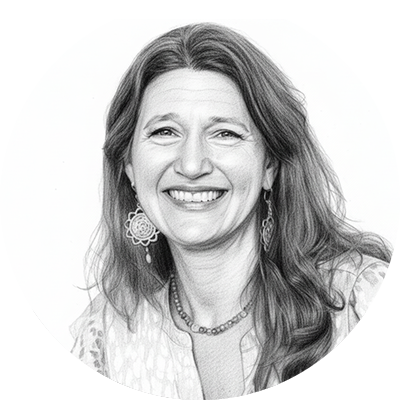We Are All Meant to Be Each Other’s Angels
A psychologist on healing from Complex PTSD, resilience, and Post-Traumatic Growth.
by Arielle Schwartz, PhD
I began my research on resilience many years ago to try and understand why some people respond better to adverse childhood environments than others. I was drawn to this topic because I wanted to understand how to strengthen my own wellbeing as I navigated the consequences of my own childhood trauma.
On the surface, my upbringing appeared good enough. While my parents were divorced, I had two parents that loved me and grew up in the upper middle class on scenic Long Island, NY. It never occurred to me that my anxiety, depression, and pervasive feelings of shame were the result of post-traumatic stress.
It wasn’t until I became a psychologist and learned about complex traumatic stress or Complex Post-Traumatic Stress Disorder that I better understood my symptoms.
CPTSD is the result of repeated or chronic exposure to ongoing stress. It can sometimes occur as the result of severe neglect or abuse; however, it can also arise as the result of accumulative exposure to dismissive, undermining, or rejecting caregivers. In my case, I felt emotionally unsafe for extensive periods of time throughout my early childhood.
My parents had gone through a conflictual divorce when I was four years old. My early memories of their fights are accompanied by vague sensory memories of feeling afraid and lonely. From that point forward, my life was defined by the rhythm of traveling back and forth between their markedly different households.
I felt most at home with my mother and stepfather, who were both psychotherapists and encouraged the open expression of emotions. In contrast, I felt uncomfortable and unsettled with my father and stepmother, who emphasized learning and knowledge but were quick to dismiss or ignore my emotions. Whenever I stayed with them, unexpressed emotions of anger, jealousy, and grief built up within me and weighed down my young body.
Symptoms of complex post-traumatic stress can vary but there are some common elements. We tend to have heightened awareness of our surroundings or a general feeling of being “on guard.” We might feel strong emotions, but it is also normal to want to push away difficult feelings through over-thinking, perfectionism, or working excessively.
We might have a difficult time navigating everyday stressors or be prone to anxiety, depression, or feelings of hopelessness. We tend to take over-responsibility for the problematic parts of our childhood, believing that we are at fault, unworthy, or unlovable.
This can lead to pervasive feelings of shame and unworthiness. If trauma began with relational wounds or betrayals, we might continue to have a difficult time trusting others or be too quick to trust others, which can put us at risk of entering into harming relationships.
An additional consequence of chronic trauma exposure is that this begins to take a toll on our physical health. For me as a child, my body began breaking down, which showed up as asthma, allergies, and respiratory distress. To cope with respiratory infections, I was on steroid inhalants and antibiotics for many years. I already had frequent stomach aches as a result of my anxiety but the medications wreaked havoc on my gut.
In part, trauma disrupts physical health because of its impact on the autonomic nervous system, your body’s built-in stress response system. It is common to suffer from migraines, gastrointestinal problems, respiratory distress, autoimmune disorders, and an array of medically unexplained symptoms.
The autonomic nervous system consists of two subsystems: the sympathetic and parasympathetic nervous systems. The sympathetic nervous system helps you meet the demands of stressful events by allowing you to mobilize your body for the purpose of self-protection. This is often referred to as the fight-or-flight response.
The parasympathetic nervous system is thought to be a recovery system that helps you rest in stillness, digest your food, and restore all of your bodily systems. This is often referred to as the relaxation response.
Ideally, these two subsystems work in a rhythmic balance that fosters healthy sleep, digestion, and immune system functioning. Trauma may disrupt this balance, which can lead to a prolonged dysregulation of many of our bodily systems.
A disrupted autonomic nervous system also contributes to mental and emotional health symptoms, such as feeling trapped between experiences of being keyed up in anxiety or shut down with exhaustion. Simply put, we become less resilient to stress.
My studies on resilience psychology brought me back into balance and helped me to reclaim my physical, emotional, and spiritual wellbeing. I learned that not only might we experience post-traumatic stress after trauma exposure, but that we can also grow and ultimately become stronger, wiser, and more compassionate.
The concept of Post-Traumatic Growth refers to the belief in our ability to work through feelings of terror, rage, shame, and despair and know that we can ultimately discover a greater sense of freedom, wisdom, strength, and peace.1
Over the past 15 years, I have been writing on trauma recovery, resilience, and post-traumatic growth, gathering and teaching the factors that support our optimum wellbeing in the face of adversity. One of these factors involves rebalancing the autonomic nervous system so that we can reclaim our birthright of mind-body health.
For example, when we engage in practices that stimulate the vagus nerve, we open up our body’s capacity to restore wellbeing. These are simple practices, such as self-applied massage to the face, ears, and sides of your neck, and engaging in conscious breathing to enhance a felt sense of ease.
The nervous system is intricately connected to all of the other bodily systems, such as the immune, respiratory, digestive, and endocrine systems. When we balance the nervous system, we facilitate greater overall health.
A second factor associated with resilience is having meaningful connections with each other — our fellow human travelers.
According to the Harvard Center for the Developing Child, children facing serious hardship are more likely to do well in life when they have had at least one stable, supportive, protective, and caring relationship with an adult.2 This caring adult might be a family member, other caregiver, teacher, coach, neighbor, or community member.
When we as children have highly stressful home environments, school and other community spaces can become an essential respite as safe havens. Research suggests that having these meaningful sources of connection help us grow and support our resilience at any stage of our lives.3
Not only am I profoundly grateful for the people who supported me along my own journey, but it’s become my life’s mission to show up with others in a loving, compassionate, and caring way. I deeply believe that we, as humans, have the capacity to not only recover from adversity but live into the best versions of ourselves when we have sufficient support.
In the Post-Traumatic Growth Guidebook I write,
I have come to believe that we are all meant to be each other’s angels. I believe that we have endless opportunities to pay attention to each other and to respond with compassion. I believe that our personal growth is meant to serve a larger purpose. For me, this involves living with an open heart, being kind to others, and taking care of our earth.4
It takes great courage to walk the transformational path of trauma recovery. With the right support, knowledge, and skills, you can not only learn to navigate the hardships of your life with resilience but ultimately blossom into your greatest potential.
Arielle Schwartz, PhD, is a licensed clinical psychologist, certified complex trauma professional, and award-winning author of eight books on trauma recovery, including The Post-Traumatic Growth Guidebook. She is an internationally sought-out speaker, leading voice in the field of trauma recovery, and founder of the Center for Resilience Informed Therapy in Boulder, Colorado, where she offers an integrative, mind-body approach to therapy that includes relational therapy, somatic psychology, EMDR Therapy, parts-work therapy, and therapeutic yoga for trauma. She specializes in applied polyvagal theory, which focuses on addressing imbalances within the autonomic nervous system that underlie most mental and physical health conditions.
Tedeschi, R. G., Shakespeare-Finch, J., Taku, K., & Calhoun, L. G. (2018). Posttraumatic growth: Theory, research, and applications. New York: Routledge.
National Scientific Council on the Developing Child (2015). Supportive Relationships and Active Skill-Building Strengthen the Foundations of Resilience: Working Paper No. 13. Retrieved from www.developingchild.harvard.edu.
Maddi, S. R. (2013). Hardiness: Turning stressful circumstances into resilient growth. New York: Springer.
Schwartz, A. (2020). The Post Traumatic Growth Guidebook: Practical Mind-Body Tools to Heal Trauma, Foster Resilience, and Awaken to Your Potential. Eau Claire, WI: Pesi Publishing and Media.




The connection between autonomic nervous system dysregulation and physical health sympoms really resonates. So many people don't realize their chronic gut issues or respiratory problems might be rooted in unresolved trauma. The vagus nerve stimulation techniques you mention are game changers for reclaiming that sense of safety in the body.